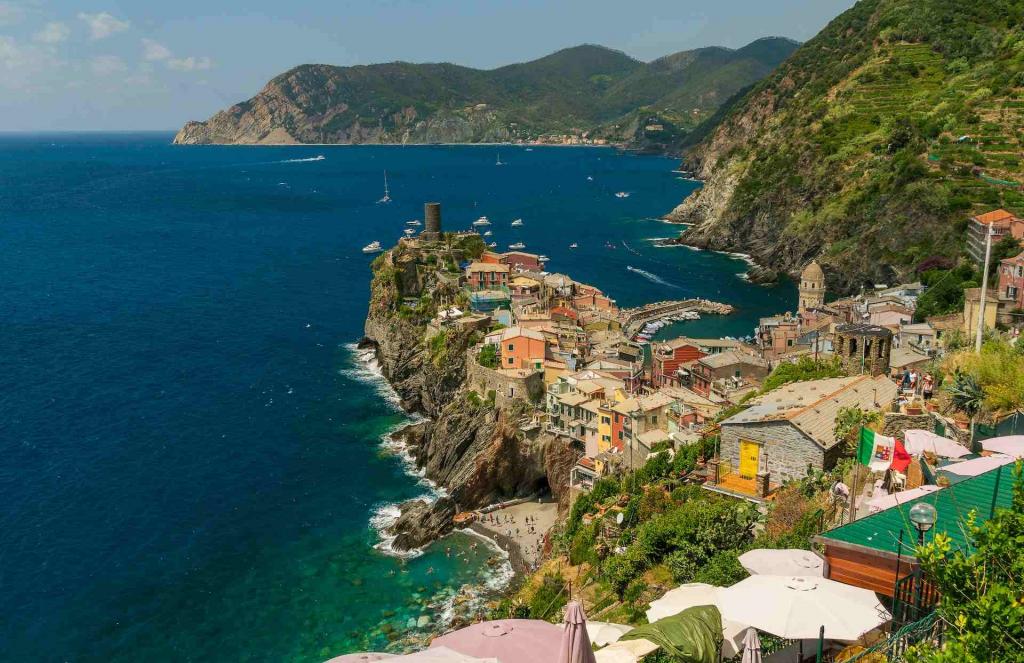Thessaloniki gets ready for its metro launch in November
The underground rapid transit lines have been under construction for almost two decades due to various project delays
 TheMayor.EU logo
TheMayor.EU logo 
Maritime transport to Cinque Terre is becoming a key element in the environmental conservation of the region
The towns in the UNESCO-protected national park cannot deal on their own with the trash generated by the throngs of visitors
The Cinque Terre National Park on the Ligurian coast of Italy is one of the strongest tourist magnets with its enchanting landscapes, but this popularity brings in a darker side. Visitors cause waste accumulation that exceeds the managing capacity of the small towns there. So, a partnership project has sprung in response, which will see the installation of waste sorting bins on the boards of the ferries going to Cinque Terre.
Furthermore, passengers will be made aware through informational campaigns and urged to keep the trash they collect in their bags during their visit and then dispose of it when they return on board of the boat.
The project was launched at the end of last week and is the product of a collaboration between the utility company Iren (through its waste management subsidiary ACAM Ambiente), the Cinque Terre National Park and the Cinque Terre Golfo dei Poeti Maritime Tourist Consortium.
In Italian, waste sorting bins grouped together are known as ecological islands (isole ecologiche) and in this case, at least, that term bears poetic justice given that they will be located on the boats departing from La Spezia and Porto Venere to the small towns in the national park.
The president of the Park, Donatella Bianchi, reflected on the awareness-raising element of the initiative: “Visiting a park like that of the Cinque Terre, emblem of the connection between man and nature, can and must offer an educational, as well as a recreational experience. Reducing the amount of waste deriving from transport flows by sea means concretely helping the local community in managing the impact on the environment.”
“The project acts on motivation and information, stimulating collaboration at various levels: individuals, institutions and citizens. Visitors are enabled to reflect and at the same time feel an active part. An invitation to do the right thing and to take home, together with the beautiful memories of the Park, the awareness of everyone's role in safeguarding the natural capital,” she added, as quoted by a press release.”
Plastic and cans, paper and non-recyclable residual waste can all be brought back to the ferry and disposed of. The trash will then be collected by ACAM Ambiente.
In addition, the waste management company has already been partnering with the national park in encouraging tourists to take a more active part in environmental care. Since the beginning of this year, you can join one of the so-called “plogging” guided tours, where apart from hiking and enjoying the beauty of nature you will get to pick trash along the way.
The term “plogging” was apparently invented in Sweden to describe outdoor sports activity, such as jogging or hiking which is combined with picking up litter.
The “plogging” tours are free, upon reservation, as part of the calendar of guided tours organized by the Park. Hikers can share, reflect and concretely contribute to cleaning the paths, with gloves, bags and containers provided directly by ACAM.
The Park is also studying the project of creating ecological islands within the marinas of the villages to serve the local fishing fleet and boaters.

The underground rapid transit lines have been under construction for almost two decades due to various project delays

Now you can get your wine in Talence by paying directly in Bitcoin

That’s because the state has to spend money on updating the railway infrastructure rather than subsidizing the cost of the popular pass

Rethinking renewable energy sources for the urban landscape

The examples, compiled by Beyond Fossil Fuels, can inform and inspire communities and entrepreneurs that still feel trepidation at the prospect of energy transition

Now you can get your wine in Talence by paying directly in Bitcoin

The 10th European Conference on Sustainable Cities and Towns (ESCT) sets the stage for stronger cooperation between the EU, national and local level to fast track Europe's transition to climate neutrality.

At least, that’s the promise made by the mayor of Paris, Anne Hidalgo

The underground rapid transit lines have been under construction for almost two decades due to various project delays

At least, that’s the promise made by the mayor of Paris, Anne Hidalgo

Hostal de Pinós is located in the geographical centre of the autonomous region

Despite its church-y name, the district has long been known as the hangout spot for the artsy crowds

Urban dwellers across the EU are having a say in making their surroundings friendlier to people and the environment.

Forests in the EU can help green the European construction industry and bolster a continent-wide push for architectural improvements.

Apply by 10 November and do your part for the transformation of European public spaces

An interview with the Mayor of a Polish city that seeks to reinvent itself

An interview with the newly elected ICLEI President and Mayor of Malmö

A conversation with the Mayor of Lisbon about the spirit and dimensions of innovation present in the Portuguese capital














